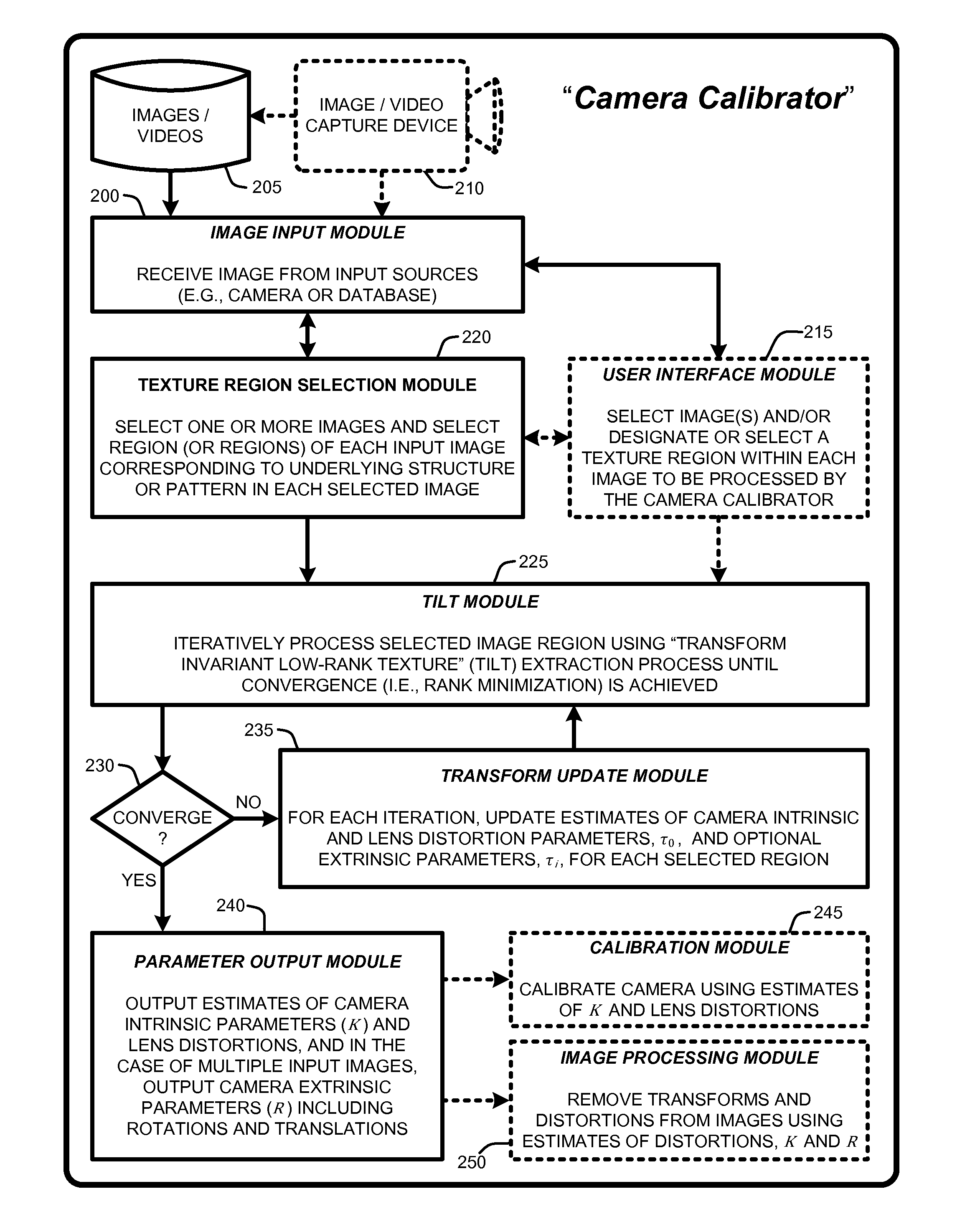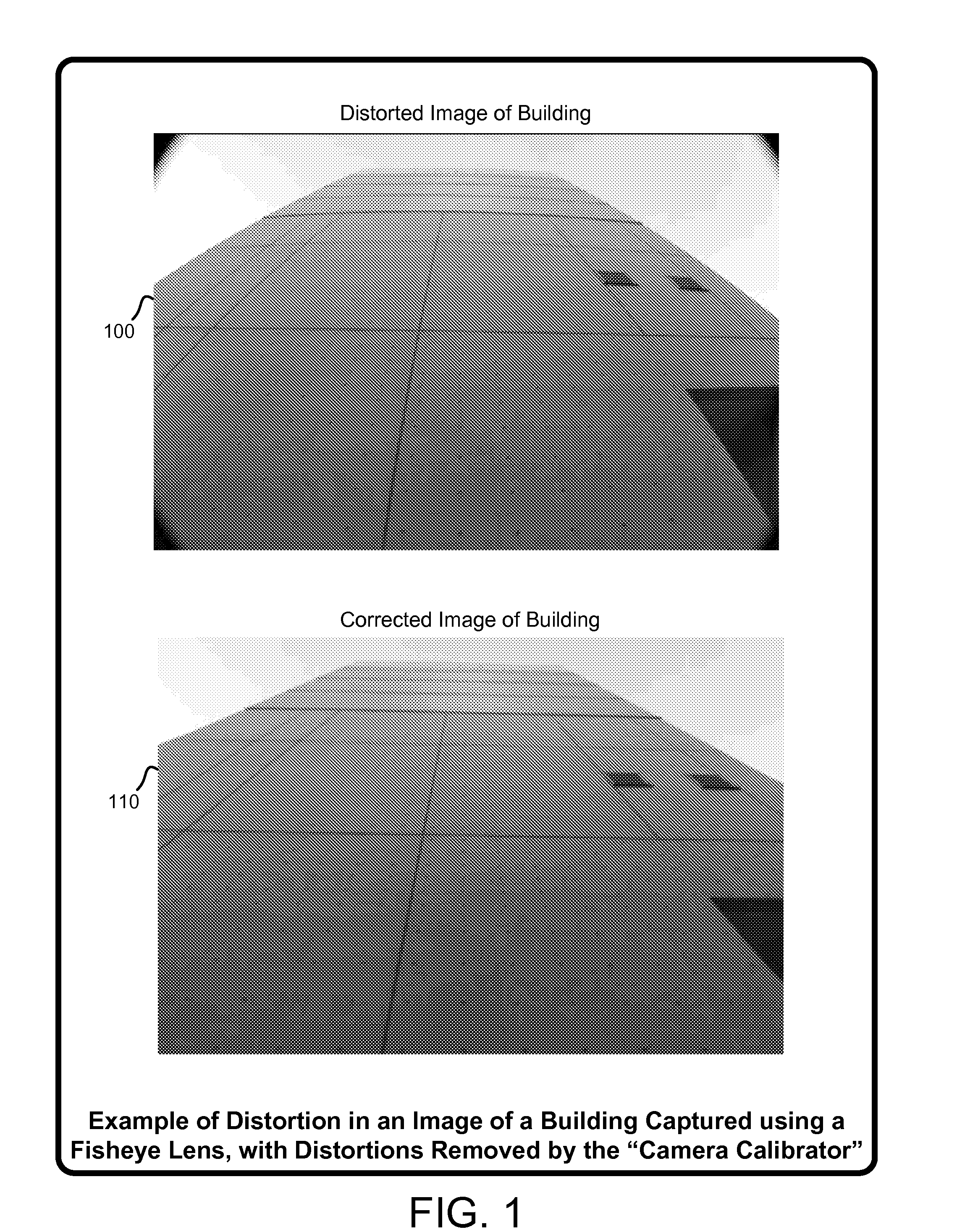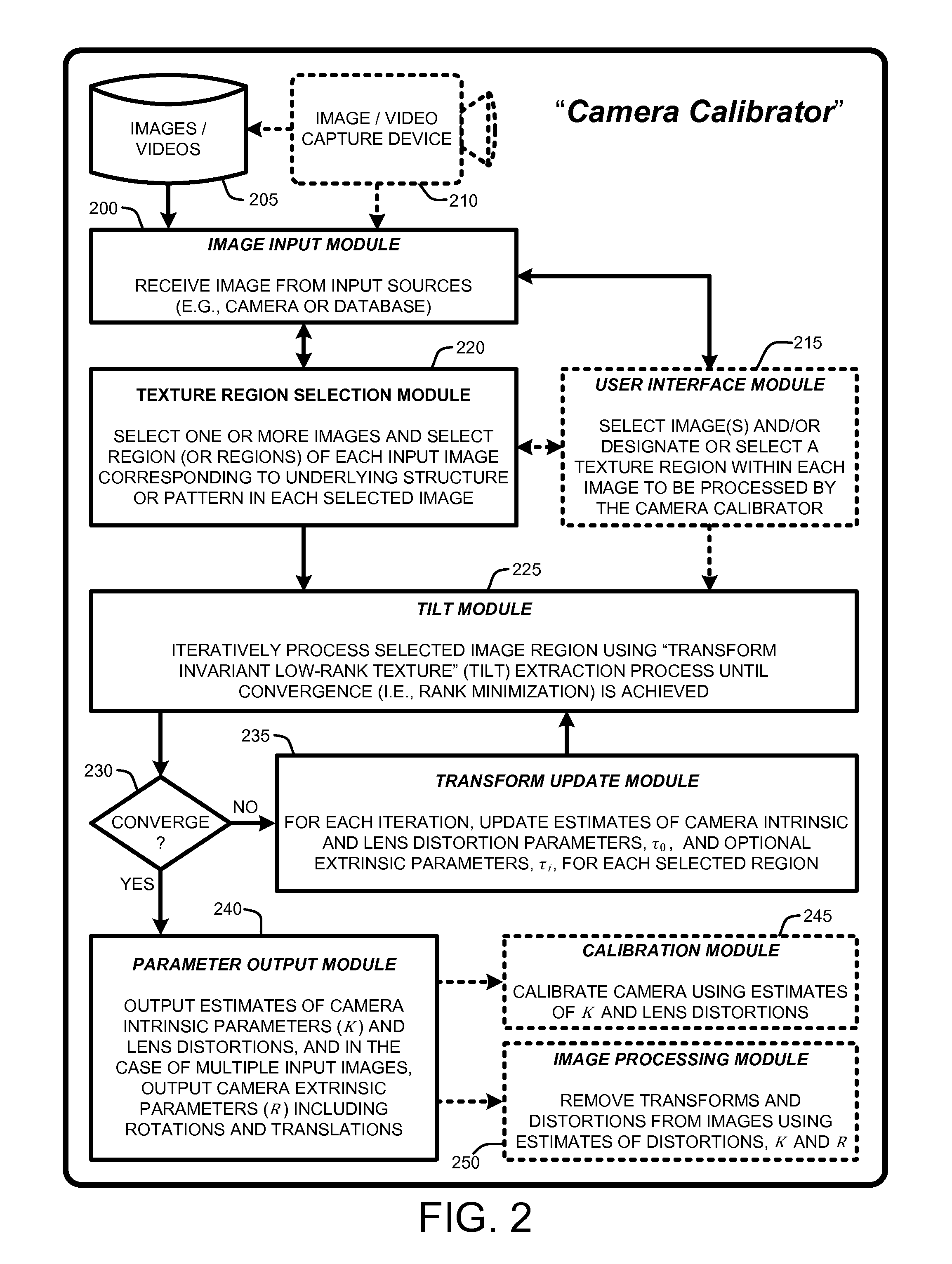Camera calibration with lens distortion from low-rank textures
a low-rank texture and calibration technology, applied in the field of camera calibration, can solve the problems of invalid camera calibration, difficult to accurately and reliably extract all wanted features in many images, and time-consuming camera calibration, and achieve accurate calibration solutions, accurate estimation of camera intrinsic parameters and lens distortion characteristics, and quick
- Summary
- Abstract
- Description
- Claims
- Application Information
AI Technical Summary
Benefits of technology
Problems solved by technology
Method used
Image
Examples
Embodiment Construction
[0027]In the following description of the embodiments of the claimed subject matter, reference is made to the accompanying drawings, which form a part hereof, and in which is shown by way of illustration specific embodiments in which the claimed subject matter may be practiced. It should be understood that other embodiments may be utilized and structural changes may be made without departing from the scope of the presently claimed subject matter.
1.0 Introduction
[0028]In general, a “Camera Calibrator,” as described herein, provides various techniques for recovering intrinsic and extrinsic camera parameters and lens distortion characteristics by processing a set of one or more input images. These techniques are based on extracting “Transform Invariant Low-Rank Textures” (TILT) (see Section 2.1) from input images using high-dimensional convex optimization tools for matrix rank minimization and sparse signal recovery. The geometry of the structures of these low-rank textures is then use...
PUM
 Login to View More
Login to View More Abstract
Description
Claims
Application Information
 Login to View More
Login to View More - R&D
- Intellectual Property
- Life Sciences
- Materials
- Tech Scout
- Unparalleled Data Quality
- Higher Quality Content
- 60% Fewer Hallucinations
Browse by: Latest US Patents, China's latest patents, Technical Efficacy Thesaurus, Application Domain, Technology Topic, Popular Technical Reports.
© 2025 PatSnap. All rights reserved.Legal|Privacy policy|Modern Slavery Act Transparency Statement|Sitemap|About US| Contact US: help@patsnap.com



